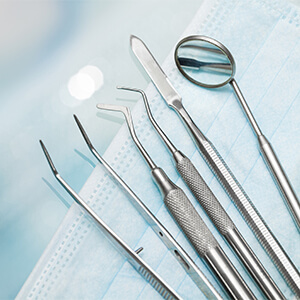 We use laser dentistry in our practice for hard and soft tissue procedures. The lasers used are narrow beams of light energy that can penetrate the tissue, producing the ability to vaporize, remove or shape soft tissues such as the gums, cheeks and tongue. It can also penetrate hard tissue and remove decay.
We use laser dentistry in our practice for hard and soft tissue procedures. The lasers used are narrow beams of light energy that can penetrate the tissue, producing the ability to vaporize, remove or shape soft tissues such as the gums, cheeks and tongue. It can also penetrate hard tissue and remove decay.
Laser dentistry can be used to correct many problems from uncovering partially erupted wisdom teeth to removing lip pulls in orthodontic patients. Lasers can also obtain small tissue samples in biopsy procedures to detect lesions or potential tumors in the mouth.
Crown Lengthening
The most commonly performed procedure using dental lasers is crown lengthening, also known as a gingivectomy, to help correct gummy smiles. Crown lengthening is a periodontal procedure that reshapes the gum and supporting tissues to expose more of the tooth. This procedure can be used for aesthetic reasons to repair teeth that appear too short or "gummy smiles" and uneven gum lines.
It is also commonly performed on patients to repair a tooth that is fractured or decayed below the gum line. By reshaping the gum and supporting tissue, the fractured or decayed area becomes more accessible and gives us the needed space to establish the restoration.
Using laser wavelengths, we are able to cut the gum tissue to improve your dental health and the appearance of your smile. Patients will be able to reap the benefits of both enhanced function and aesthetics. Their overall periodontal health improves along with letting the natural beauty of their smile shine through.
Using laser dentistry as opposed to other forms of surgery does have its advantages. Lasers can control the amount of bleeding during the treatment and can sometimes remove gum tissue without causing bleeding. In laser dentistry, there may also be less swelling and pain following the surgery as the laser can seal blood vessels and nerve endings.
